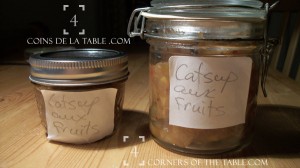I have been undergoing an identity excavation and restructuring for the last couple of years. This excavation became somewhat archeological in 2010 when I traced my genealogy and ancestors. Who are they and then who does that make me? I have been trying to measure all of the genetic material and what it has overcome […]

Along the journey...
I have been undergoing an identity excavation and restructuring for the last couple of years. This excavation became somewhat archeological in 2010 when I traced my genealogy and ancestors. Who are they and then who does that make me? I have been trying to measure all of the genetic material and what it has overcome to endure and thrust me forth. I guess I was looking for perspective, but the question quickly turned into “what did they eat?”
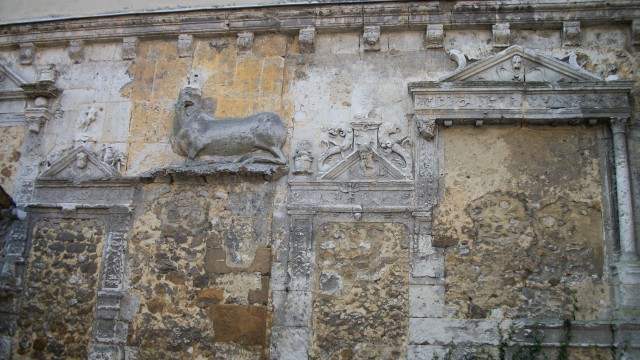
Where the search for my roots would take me
For Christmas 2010, I went on an extreme back-country ski trip in the Charlevoix region, being prepared for cross-country skiing with a friend from Montréal and two great girlfriends from France. We had a great time, without accomplishing the skiing from refuge to refuge. We ate a decadent reveillon dinner in a cabin in the woods and then got shamanistic and loose in an igloo under the moon. On the way home, though, we stopped in the villages of my ancestors: Petite-Rivière-St-François for my Simard side, Chateau Richer for my Chabot and Mésange side and Ste-Anne-de-la-Pérade for my Leduc side. It was winter and very beautiful, but things were closed for the holidays, and the only hint of my ancestors’ diets was that in Ste-Anne-de-la-Pérade were the ice fishing cabins dotting the river, and I imagined my ancestor Antoine Leduc, courreur des bois, ice fishing as well. These cute villages seemed to take on a special meaning as I connected them to my genetic origins.

The sun going down on the idyllic Chateau Richer, Qc., once the home of my Chabot and Mésange sides
In the summer of 2011, I went to France to visit the same French girls I had visited my ancestral villages with in Québec. I wanted to see them all, but I didn’t have time to see Angoulême where my Simard side is from. I did see Nalliers in Poitou-Charentes where my father’s paternal Chabot side emigrated from. It was really old, rural and quiet. The village was tiny, the church empty and I only saw a few really old people in the streets.
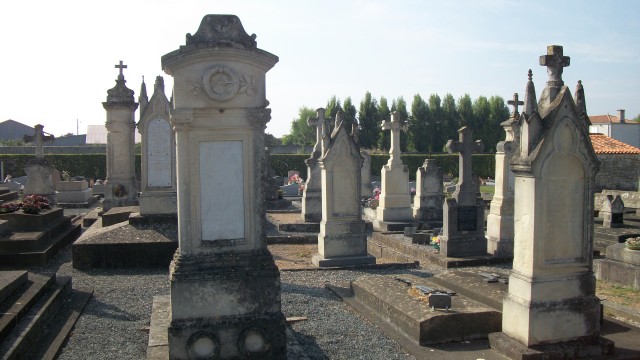
Generations upon generations in Nalliers in Poitou-Charentes' cemetary- origin of the Chabot family
The second place I visited was the origin of Antoine Leduc, my maternal grand-mother’s ancestor. There is a novel about him and he had quite the adventures as a Courreur des Bois, getting married to a Fille du Roi and eventually getting killed in the Toronto or Detroit region by the Iroquois while trading furs. His village was called Louvetôt and it was in Normandy.
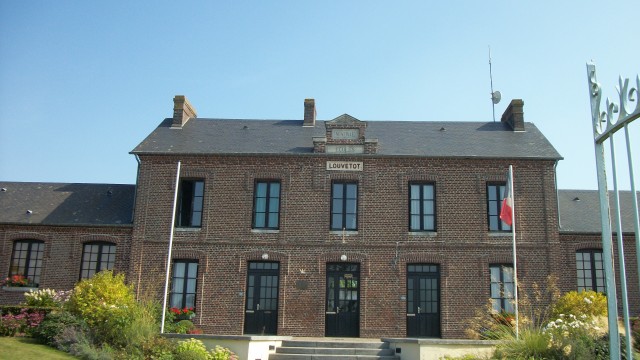
School and town hall in the village of Louvetôt in Normandy- origin of Antoine Leduc the Courreur des bois
I took the train from Rouen to the closest village and then I was going to walk 7 km to Louvetôt. A trucker picked me up, and asked why I was going to Louvetôt as I was obviously far from home. I told him I was searching my ancestral lands for my roots. He said “Oh la vache!” when he thought about someone coming from Canada to a place like Louvetôt with probably about 100 inhabitants.
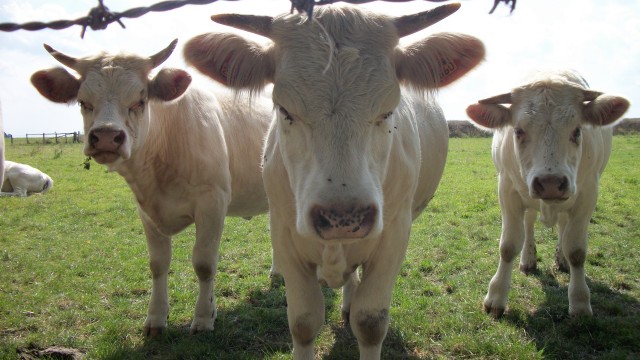
Oh la vache! La sacrée vache! The cow, like the apple, is for real in Normandy!
When I got there, I couldn’t really figure out what they ate either as they had one bakery that sold a few pan-French pastries and cheap candy. There was a church and the City Hall and school were combined. It took me about 5 minutes to walk from one end of town to the other. I walked through the countryside all afternoon from one rural village to the other. It was nice, but I didn’t find my ancestors’ food.
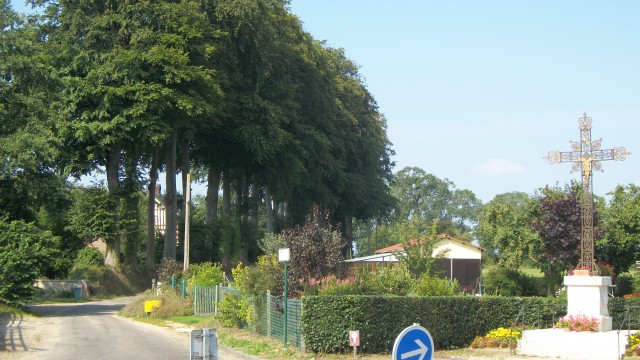
Cross and all- Louvetôt
The last place I visited though was wonderful! It was called Mortagne-Au-Perche- still in Normandy. I hitch-hiked there and was driven by a sweet Portuguese family and a very kind Turkish man that went out of his way to bring me there. I stayed with a sweet 71 year-old woman named Madeleine.
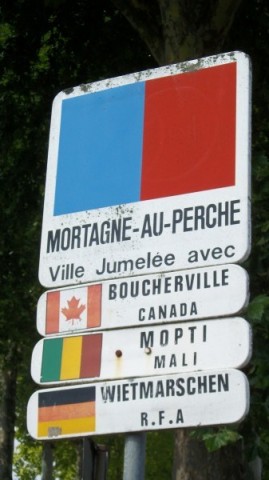
Mortagne-au-perche sister city with Boucherville- really?
Mortange was the place of origin of my ancestor Marie Mésange, wife of Mathurin Chabot(My father’s paternal ancestor). She was baptized on April 4th, my birthday, and Mathurin died on June 12th the day of my father’s birth. Mésange is the French name for the tit (bird).
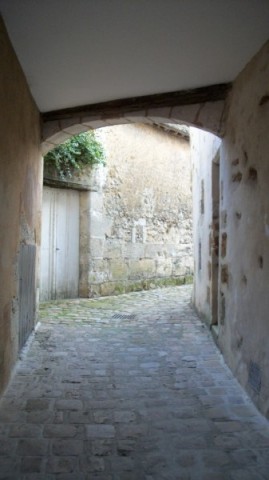
What will one find when one looks inside?
The culinary past is still present. Boudin Noir! Mortagne is the capital of Boudin Noir (black blood sausage or pudding). Over 100 exhibitors, butchers, traders and artisans from around the world gather for an annual festival for blood sausage enthusiasts! Four to 5 kilometres of black blood sausage is sold during the three days. There is a competition for who has the best blood sausage (tasted cold), a pig squealing contest and participants have to take a vow, swearing that they eat blood sausage at least once a week religiously and that they will sing and spread the good news.
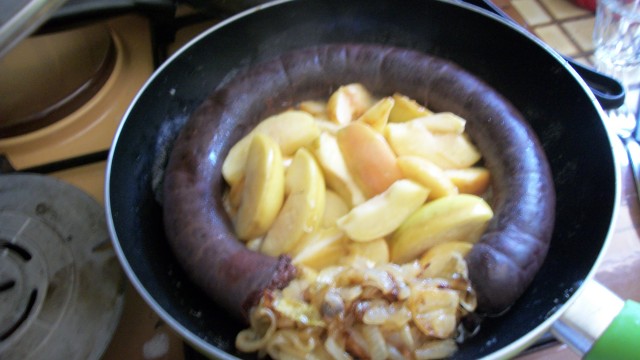
The real comfort food that resonates in my dna! Blood sausage, apples and onions.
I didn’t eat blood sausage until I got to Québec, and I loved it. It felt like coming home. I made it for my Simard family in a Caribbean-style (Pudding and Souse) a few years ago. My Mom, my Aunts and Grand-parents were overjoyed to eat boudin visibly displaying pangs of nostalgia, but my cousins weren’t having it. Why did blood sausage feel comforting and delicious to me and not my cousins?
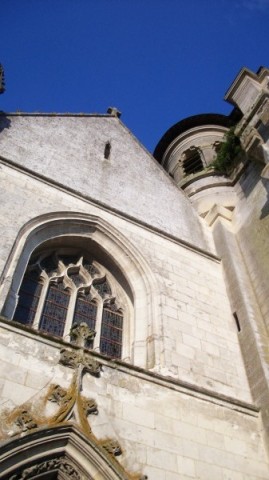
The Church
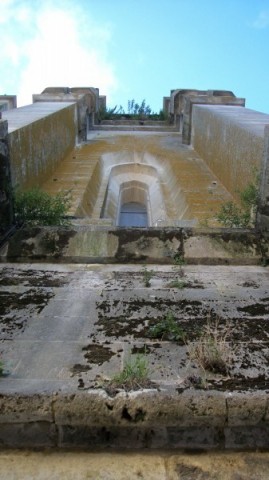
My heart skips a beat!
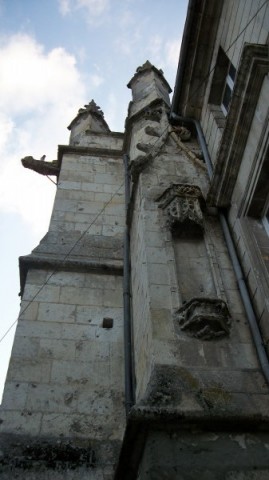
Pangs of nostalgia- so beautiful
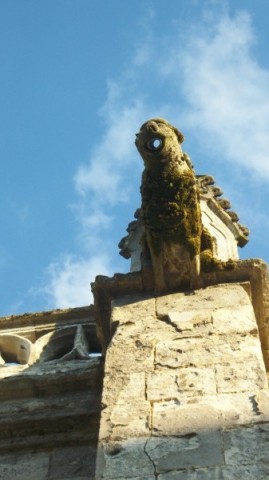
Gargoyle avec un peu de vécu et de la vie
I really felt at home in Mortagne-au-Perche. The architecture and scenery was gorgeous. I was welcomed into Madeleine’s home. I also enjoyed the company of Madeleine’s friends one evening, two newly re-married couples in their 60’s living life to the fullest, cracking jokes, the wine flowing, getting that dreamy Shangri-la look when they spoke of the mystical Quebec of Gilles Vigneault that they’d never gotten a chance to visit, but had seen on tv so many times.
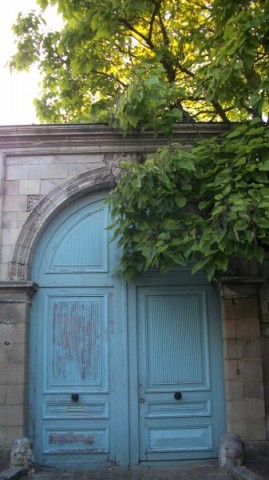
The door
They grumbled about how the butcher, in the centre of town with a snazzy shop, shouldn’t make blood sausage because he’s stealing business and the work of the charcutier. They made it clear that Le Roi du Boudin was the place to go. The boudin was delicious. I had it smoked, with candied oranges, apples, chestnut, and much more. Other regional specialties in Mortagne-au-Perche are cider, pommeau and calvados. I don’t drink anymore..but I drank while I was there… I love pommeau and cider and it was great with the blood sausage. I did find traces of my ancestors: I ate what they ate, I saw buildings that had belonged to the aristocratic Mésange family and I saw the bird itself.
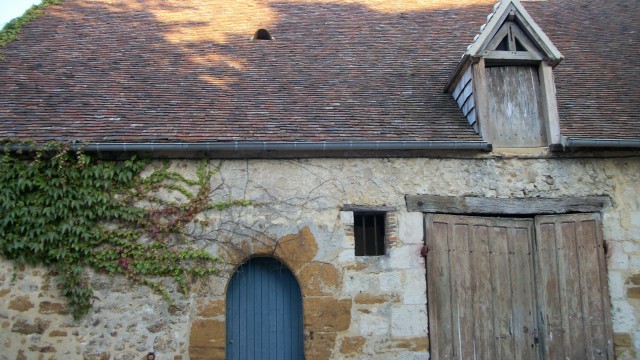
It's good to be home...
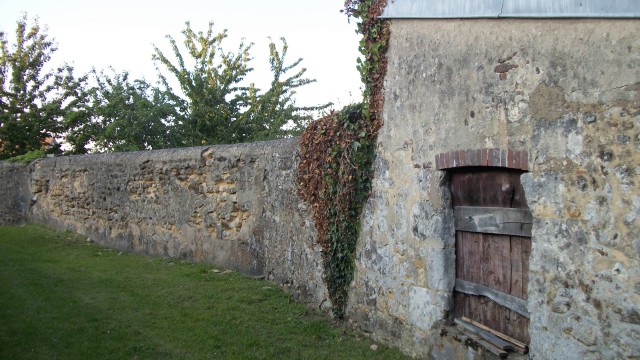
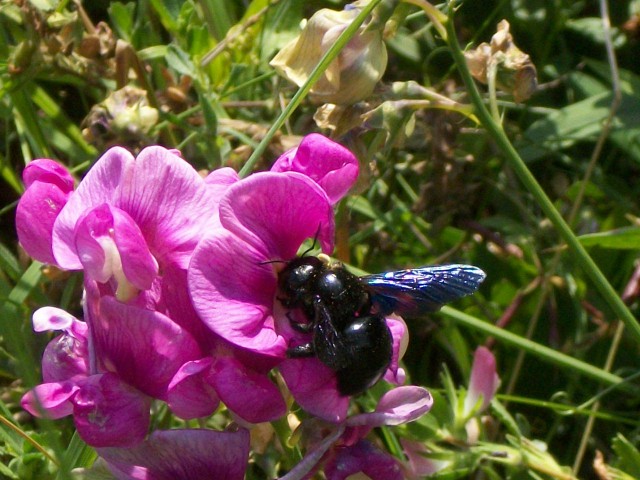
Mélissa means "honeybee" in Greek. The sweet pea is my flower. On the last day of my trip I saw a group of black carpenter bees with blue iridescent wings in a patch of sweet peas. Thank you!
In Quebec the tourtière keeps its noble place on tables during the Réveillon or Christmas Eve. My family, which left Quebec 30 years ago for British Columbia still eats tourtière at Christmas too. If you do not know what the tourtière is, for many it is a meat pie with or without potatoes, […]
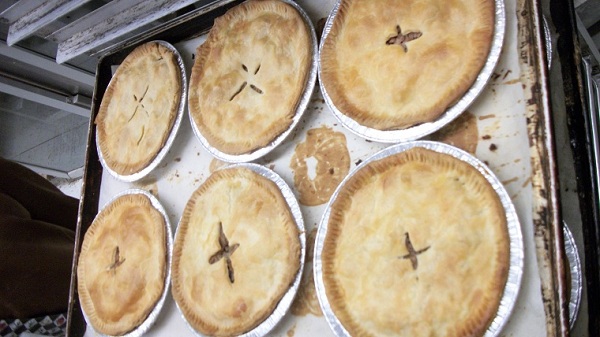
Tourtières fresh out of the oven- meat pie style
In Quebec the tourtière keeps its noble place on tables during the Réveillon or Christmas Eve. My family, which left Quebec 30 years ago for British Columbia still eats tourtière at Christmas too. If you do not know what the tourtière is, for many it is a meat pie with or without potatoes, but in Lac-St-Jean and Gaspésie it is a deep dish mix of meats covered with dough.
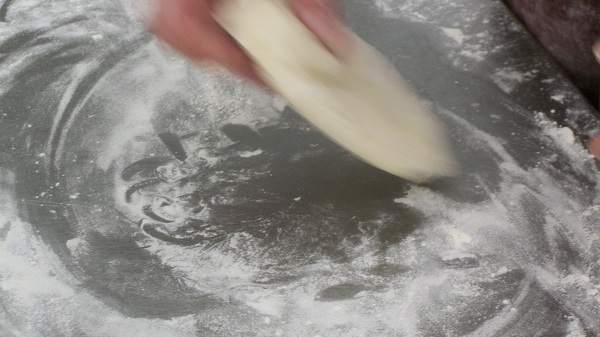
Scraping dough off the table
On November 20th I went to Aux Purs Délices the pastry shop on Church Street in Verdun to participate in the Réseau d’Entraide de Verdun bi-annual tourtière making day. Mr. L’Anglais generously leaves us his bakery and supplies with the boxes, aluminum pie trays, the use of his ovens and rolling pins to make the pies. The tourtière are sold for $3.00 each and are very popular at Christmas time. We make tourtières to fund my cooking workshops amongst other activities. Making them is a lively gig where one group of volunteers does the morning shift and another group the afternoon shift. The volunteers are put in different modes of production: most roll tops and bottoms, while others fill the pies, cover them, cut an “X” and brush the tops with egg wash, and others still fill the speed rack and the ovens. We get to taste the shop’s delicious pastries. The radio plays and we sing along with music from the 70’s and 80’s. You will hear comments like “C’est Richard Seguin qui chante ça. J’y ferais pas mal. Je passerai mes mains dans ses cheveux.” There’s a lot of fooling around, but we also manage to pump out about 400 tourtière’s in a day thanks to the energy of the volunteers, the rotating oven that fits 72 tourtière s at a time and because of the sheer love for tourtière.
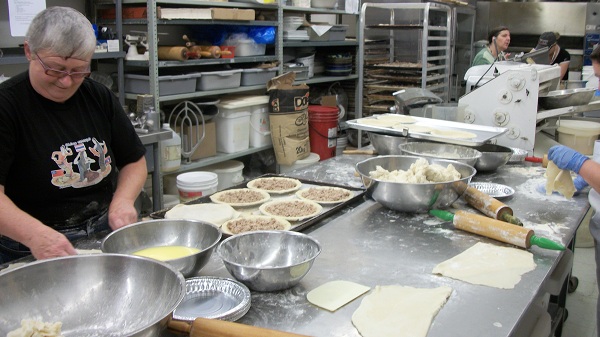
- Production at Aux Purs Delices
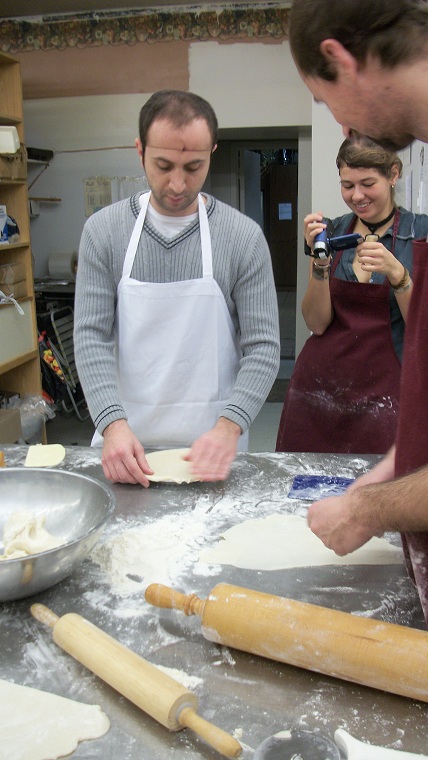
Working the dough
While I was doing research for a contract the same week, I stumbled on “The Long History of Tourtière of Quebec’s Lac-St-Jean” by Jean-Pierre Lemasson in What’s to Eat: Entrées in Canadian Food History, Edited by Nathalie Cooke. It turns out that tourtière may have come from tourterelle or turtle dove pie. It may also have come from the name of the dish tourtière that it was cooked in, but the first recorded tourtière -like recipe dates back to 1600 B.C. Mesopotamia. It instructs to boil gizzards and intestines with aromatic bark, salt, fat and rue. It uses onion, samidu (an unknown spice from Mesopotamia), leek, garlic, sasku semolina and milk for the dough, and of course, poultry.
In 400 AD there is a version made with tripe, lovage, eggs and wheat flour.
There is also the Cipaille or Cipâte in Gaspésie whose ancestors are the Sea Pie, Cipaye, Cipare, Six pâtes (6 doughs), six pailles (six straws). This traditionally had 6 layers, but it has ebbed into something made with what people have: traditionally pork and veal. The tourtière has become a meat pie for those outside of Lac-St-Jean. In the Middle Ages, however, the six layers included:
1) Fried chicken with onions and spices
2) White and Green (parsley) ravioli
3) Sausage, minced meat and ham
4) Minced pork with cheese and eggs
5) Sausage, brain, marrow, cheese and herbs
6) Ravioli with almonds, half of them sweetened with sugar
Between each layer there were stuffed dates and eggs. Sounds like an Epic Meal Time feat to me. This was the decadent version, but the beauty of the meat pie is that it cuts across class lines because you can use what you have. For the Réseau d’Entraide’s we used ground pork that had been donated and the dough from Aux Purs Délices. The pies are humble, but delicious and they are at a price that is affordable to all, even those with the least and they help to finance food security measures, food hampers, collective kitchen groups and cooking workshops that give people the culinary tools to save money, eat better and build autonomy.
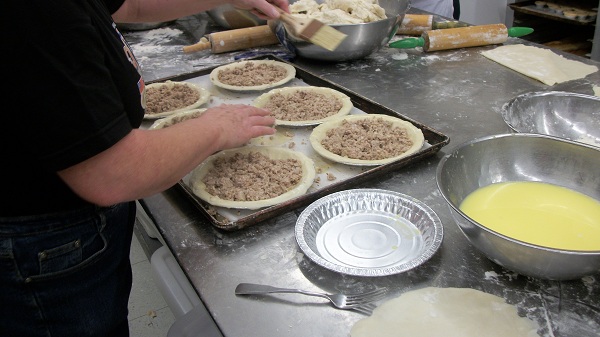
Getting ready for the Tops Tops on- Check- ready for trimming and grooming.
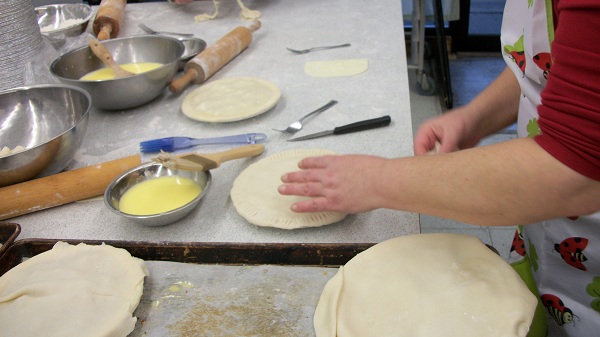
Finishing Touches
Charlevoix and Lac-St-Jean both claim to be the home of the real tourtière. My Simard ancestors first landed in Charlevoix, but then many Simard’s moved to Lac-St-Jean. Maybe the tourtière had a similar story. The tourtières roots run much deeper than that thought. Meat pies are one of the earliest recipes known to man. There are versions throughout Europe, the Middle East and the Slavic countries. They have been exported around the world (patties, empanadas)- everyone has a version. Maybe that explains the deep nostalgia we feel when we eat tourtière at Christmas. The feeling is deeper than Quebec pride, it is engrained on our genes and a symbol of survival, movement around the planet and baking our own version of “abundance” . Companion means “bread sharer” in Latin, so as soon as you have the crust holding everything together, you have a real party and coming together.
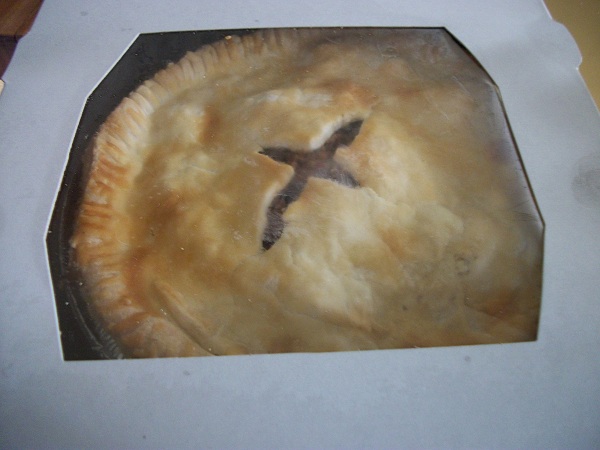
Party in a Box for $3.00
Challenge: I challenge you to make your own meat pie with as many layers as you see fit, that represents who you are, your social strata and your genetic evolution.
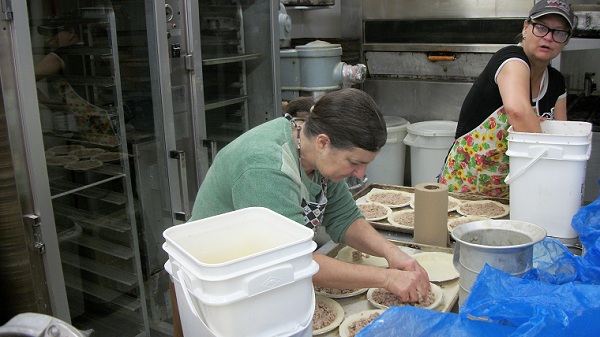
Toutière Enthusiasts
For more info about tourtière click here:
If you want to see my recipe for Catsup aux Fruits which is great with tourtière click the photo below
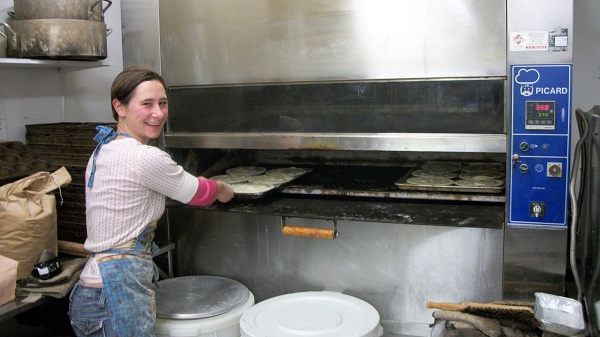
Convection oven with Rotating Racks- We baked 72 tourtière at a time- 144 if we wanted to.
CATEGORIES
Archives
- February 2022 (1)
- October 2020 (2)
- September 2020 (1)
- January 2016 (1)
- January 2015 (1)
- October 2014 (1)
- February 2014 (1)
- January 2014 (1)
- July 2013 (1)
- June 2013 (2)
- May 2013 (1)
- March 2013 (1)
- February 2013 (2)
- November 2012 (1)
- September 2012 (1)
- June 2012 (2)
- May 2012 (1)
- April 2012 (1)
- March 2012 (1)
- February 2012 (1)
- January 2012 (2)
- December 2011 (1)
- November 2011 (4)
- October 2011 (4)
Popular Tags
'Round Table Tours Asian breakfast business prolfiles cabbage canning Community Europe Events farms fermentation Fitz & Follwell Food & Story Food history Food Production food tours fresh juices Friends gastronomy health herbs History Italy kimchi Meal exchange Nuart organic preserves public Quebec restaurant Rumble & Shakes Réseau d`Entraide de Verdun salt smoothies spicy Tours de la Table Vegan youtube videos

